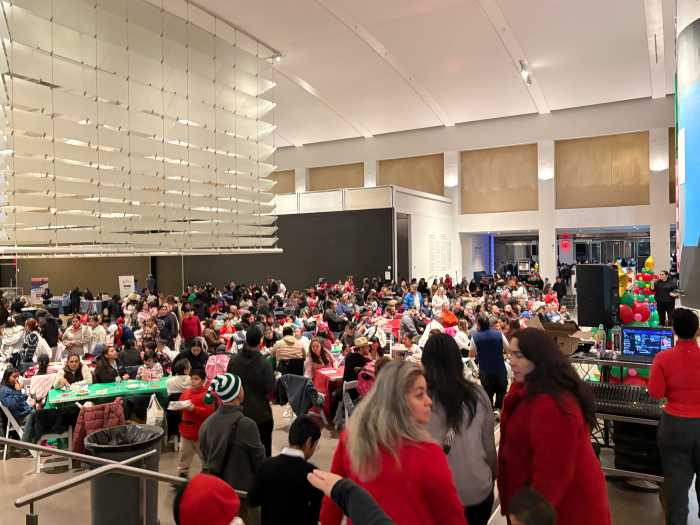By Joe Anuta
The “Maspeth, Yesterday & Today” slideshow last week was about as rowdy as a history event could get.
The alcohol might have contributed to the vocal crowd in the back room of Connolly’s Corner, at 71-17 Grand Ave. — beer and wine were served along with a buffet dinner before the March 23 show — but many of the tables were occupied by lifelong residents of Maspeth who could not help bursting into excited chatter when certain photos triggered dusty memories of their childhood home.
The show was presented by Kevin Walsh as part of his project “Forgotten New York,” and was aided in his presentation by Christina Wilkinson, president of the Newtown Historical Society.
“I think that seeing historical images of things that you remember as a kid or when from you were first married evokes an emotional response,” Wilkinson said. “You see the photo and it all comes back to you.”
And many of the residents felt a twinge of nostalgia when the old pictures flashed on the screen.
“It was great seeing all the old things I remember,” said Theresa Hutter, who has lived in Maspeth ever since she was born in 1944. “But a lot of things have changed.”
Many of the changes captured in the before-and-after shots of the slideshow could be mentally justified by running through the innovations of the last century.
It seemed reasonable enough that the cobblestone surface and trolly tracks of Grand Avenue in the 1940s would segue into the asphalt and buses — which were introduced in the 1950s — depicted in the current photos. The facade of the main shopping district along the avenue, which used to house Fritz’s Bowling alley and play host to young boys strolling in knickers, has also remained largely unchanged in structure. New businesses moved in and out throughout the decades.
But some of the before-and-after shots were so striking the entire room gasped in disbelief.
The Maspeth gas tanks, which housed fuel that heated the neighborhood, loomed several stories high in the background of many shots, and their sudden appearance was shocking. They were removed around the late 1990s and — if the din in the room was any indication — greatly changed the landscape of the area for better or worse.
“I miss those!” one woman yelled.
“I don’t,” a gruff voice answered through the dark.
And the construction of the Long Island Expressway did not just change the look of the area, it rendered the neighborhood unrecognizable in the older pictures from the 1940s.
“The Long Island Expressway ripped a trench through the center of Maspeth that exists to this day,” Wilkinson said, adding after the show that it “took a lot of places away that people were very fond of.”
There were other subtle barbs at the city and developers throughout the show as well.
With the click of a button, three identical, multi-family houses were replaced with the two single-family homes — and their rather spacious yards — that existed in the 1940s.
The slide show scrolled backward to emphasize the difference and the newly built row houses reappeared, this time accompanied by boos and hisses.
“Three single-family houses were torn down and cookie-cutter houses were installed, eliminating history and not to mention places to park,” Wilkinson read from her presentation.
There were several bouts of booing, but cheers and rounds of applause dominated the evening.
When the old Maspeth Theater flashed on the screen, with the film “He Walked by Night” on the marquee, several women cried “I remember!” and beat their palms together, delighted for the trip down a memory lane that has changed drastically throughout the decades.
Reach reporter Joe Anuta by e-mail at januta@cnglocal.com or by phone at 718-260-4566.


































